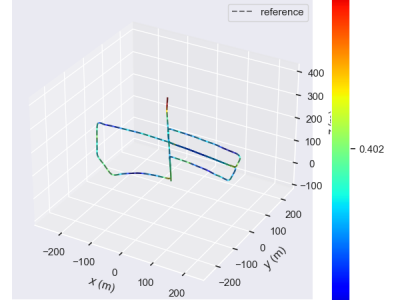*.avi; *.csv; *.txt

The classification of Doppler ultrasound images
is very important for conception prediction. However it is a
challenging problem that suffers from a variable length of those
images with a dimension gap between them. In this study, we
propose a latent representation weight learning method (LRWL)
for conception prediction with Doppler ultrasound images. Unlike
most existing related methods, LRWL can process a variable
- Categories:
 97 Views
97 ViewsERA5 derived time series of European country-aggregate electricity demand, wind power generation and solar power generation: hourly data from 1979-2019. The ERA5 reanalysis data (1979-2019) has been used to calculate the hourly country aggregated wind and solar power generation for 28 European countries based on a distribution of wind and solar farms which is considered to be representative of the 2017 situation. In addition a corresponding daily time series of nationally aggregated electricity demand is provided.
- Categories:
 558 Views
558 ViewsTree planting has the potential to improve the livelihoods of millions of people as well as to support environmental services such as biodiversity conservation. Planting however needs to be executed wisely if benefits are to be achieved. We have developed the GlobalUsefulNativeTrees (GlobUNT) database to directly support the principles advocated by the ‘golden rules for reforestation’, including planting tree mixtures that maximize the benefits to local livelihoods and the diversity of native trees.
- Categories:
 149 Views
149 Views
This dataset contains spectra of 8 types of commodities collected from two different environments. The dataset can be used to study the impact of scanning environments on the spectra distortion
- Categories:
 51 Views
51 Views
This paper conducts a systematic bibliometric analysis in the Artificial Intelligence (AI) domain to explore privacy protection research as AI technologies integrate and data privacy concerns rise. Understanding evolutionary patterns and current trends in this research is crucial. Leveraging bibliometric techniques, the authors analyze 3,061 papers from the Web of Science (WoS) database, spanning 1994 to 2023.
- Categories:
 97 Views
97 Views
This study uses monthly data on the value of Indonesian exports (Million US$) obtained from the Central Statistics Agency (BPS) from January 1993 to December 2022. The process of collecting export data by BPS is based on export documents or Goods Export Notification (PEB) filled out by exporters and has been given a loading permit by the Customs and Excise Service Office, then sent to BPS and Bank Indonesia (BI). Since 2015, other data sources in export recording are records from other agencies such as PT POS Indonesia, and sea border export surveys.
- Categories:
 128 Views
128 Views
This paper presents a cost-effective approach for building energy usage management through energy usage optimization of available building energy sources. An energy cost reduction model is developed considering grid energy usage and cost, generator energy usage and cost as well as carbon emissions tax penalties associated with scope 1 emissions. The model selects optimal times to use either Grid energy, generator energy, or a combination of the two to minimize the overall building energy usage cost.
- Categories:
 276 Views
276 ViewsThe dataset was generated through the execution of a Python script designed to collect a comprehensive set of data samples from six different sensors for each specific gesture. Upon launching the script, users are prompted to initiate gesture 0, Once ready, users can commence recording, with the program automatically capturing 1000 samples for that particular gesture. Subsequently, the program prompts users to perform gesture 1, and this process repeats until data for all gestures is collected.
- Categories:
 196 Views
196 Views
this is dataset of sEMG. raw data include four columns, which are channel 1, channel 2, channel 3, and the reference channel. corresponding thesis proposes the integration of a dynamic time regularization algorithm to enhance gesture recognition detection accuracy and real-time system performance. The application of the dynamic time warping algorithm allows the fusion of three sEMG signals, enabling the calculation of similarity between the sample and the model.
- Categories:
 24 Views
24 Views


